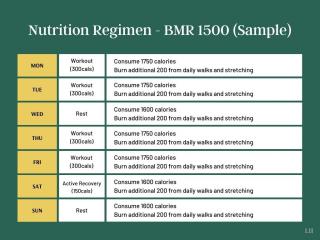There’s no question that times are uncertain right now. It’s also clear that old strategies that worked in the past—maybe even just last year—may not be as effective now given how the pandemic has changed our world. Knowing how to make plans and achieving our goals now require new strategies.
Luckily, there are some steps that you can take to achieve your goals even during a pandemic.
Most people know how to set SMART goals. That’s not overly difficult. But the challenge is knowing how to make plans that enable us to achieve those goals.
During the initial days of setting a goal, enthusiasm drives motivation to achieve results. However, it isn’t long before until it’s life as usual, and the goal you set becomes a distant memory.
Research suggests that only around 8 percent of people feel that they achieve their goals. That means around 92 percent don’t, which is a staggering number. The question is, what do the 10 percent do that the 90 percent don’t?
Many factors go into whether or not goals are reached, but two of the most important components are making a plan and making a commitment to work on the plan.
If you’re ready to realize your goals, here are 7 pandemic-proof steps on how to create a plan and achieve your goals.
1. Select Your Current Main Goals
The first problem that many people have when it comes to goal setting is that they select too many goals.
Think about it. Figuring out how to make plans for 10 goals is significantly more challenging than creating plans for 3 or 4 goals. Less is more here. The reason that this is true is that by selecting fewer goals, you can truly focus on them and make real significant progress. If you select too many goals, you’ll spread yourself too thin and likely won’t be able to make any progress at all.
So, take some time to pick 3 to 4 main goals that you want to work on right now. These can change over time or change as you accomplish them. But ideally, you want to keep this list narrow so you can have a sharp focus!
2. Create SMART Goals
SMART goals give you clarity and a deadline for achieving them. SMART goals are:
Specific: Your goal is clearly defined. “I want to make more money” is vague. “I want to make $10,000 per month” is specific. Measurable: You need to quantify your goal so you know you achieved it. This is where being specific and keen on details helps. What constitutes “more” in more money? A specific dollar amount is measurable. Attainable: It’s good to set goals that make you stretch and challenge yourself, but you set yourself up for frustration and failure if your goal is impossible. Make a plan and set a goal that is attainable. Relevant: Your goals should fit within your ultimate plans in life. There is no point going through the process of learning how to make plans for goals that aren’t relevant to the life you want to live. Time: You have to set a date by which your goal should be achieved.Note that goals work for large achievements, such as making $50,000 per year working at home, but also for smaller projects, such as, “I want to start a blog in the next 30 days,” or “I want to get five freelance clients in two weeks.”
3. Work Backwards to Create Your Plan
A big challenge to creating effective plans is that people often have no idea what it’s going to take to achieve a certain goal. They often underestimate the amount of time and effort needed to succeed in attaining something.
So, when you ask yourself how to make plans for these goals, look at the amount of time you have and the goal you want to reach. Then, create mini-goals that move you toward the big goal.
For example, if it’s your goal to make $10,000 a month in your business within six months, then create mini-goals of how much you’ll earn at the end of one month (i.e. $2,000/mo) and three months (i.e. $5,000 per month).
You’ll know you’re on or off track by the time the first and third months come and you’ve hit or missed your mini-goal. From this point, you can adjust your goals and methods accordingly and make appropriate changes in your timeline.
Overall, this step will help you to create the stepping stones you need to cross to make an effective plan and achieve your goal.
4. Determine Necessary Outcomes and Create a Timeline
Of course, learning how to make plans is going to involve figuring out what needs to happen for you to realize the goals you’re planning for. During this step, be specific on what it would take to reach your small and big goals within the time frame.
Using the $10,000 a month goal example we stated above, to make more money, you need to get more clients or customers. In this step, you want to determine how many clients you’ll need to make $5,000 and $10,000 per month in your business.
How many prospects need to enter your sales funnel? How many pitches need to be made to generate a sale? Once you’ve figured out what needs to happen for you to have achieved your goal, the next step is to select the necessary actions.
5. Select the Necessary Actions
Now that you know what needs to happen, you need to figure out what actions you must take. What tasks do you need to do regularly to achieve your goal?
For example, if you need to talk to 10 people to make two sales, what actions do you need to take to find 10 people? If you need to have 100 leads to find 10 people to talk to, what actions will it take to find 100 leads?
In business, the tasks in this section usually involve marketing. However, it also involves providing a quality product or service and keeping your customers and clients happy so they’ll keep coming back and/or refer you to new prospects. Making effective plans for success is dependent on the details. So, plan out all the details.
6. Schedule Those Necessary Actions
When you complete step 5, you should have a list of tasks that need to be completed to reach your goal. Now, it’s time to put those tasks into your schedule by making a daily plan.
These are the tasks you would do each day to generate prospects and leads. They are also the tasks you should do to create and deliver your product or service.
If you’re starting a part-time business around an already busy life, it can be a challenge to add more tasks to your daily routine. However, this step is crucial to achieving your goals. One way to make it all work is to learn how to manage and maximize your time.
7. Begin Taking Action and Follow Through
Once you’ve completed the above steps, you should have your daily schedule and targets to shoot for during the process of working on your goal. The next step is to follow your schedule.
Do the daily tasks you’ve assigned yourself to do. When you feel like things aren’t going well, find a way to keep yourself motivated. That seems like a no-brainer, and yet most people don’t achieve their goals because they don’t do the work regularly and consistently. In most cases, the plan doesn’t fail. What happens is that people simply quit.
While you’re at it, keep track of your accomplishments and results. Set aside time every month or so to evaluate how well your plan is working, and tweak it if you’re not making the progress that you want.
The true test of whether or not you’ll succeed in your home business is not only by having a good plan but also by being able to consistently work on your plan.
Many would-be entrepreneurs get the point that they have a plan, but then give up on it. The solution to this is to get excited about your goals, create ways to celebrate the small successes, and always keep your eye on the prize.
Final Thoughts
There you have it—the pandemic-proof 7-step process to achieving your goals. Remember, though, that the most detailed plan in the world will never work until you do.
It’s not enough that you know how to make plans, you also have to put in enough time and effort to work on your plans. So, put in the work! You got this!
More Tips on How to Make Plans
Featured photo credit: Cathryn Lavery via unsplash.com





























































